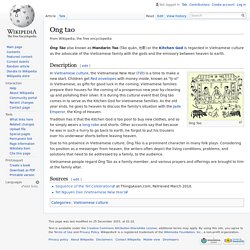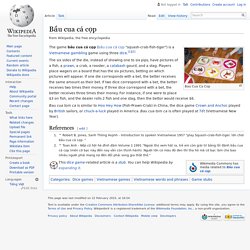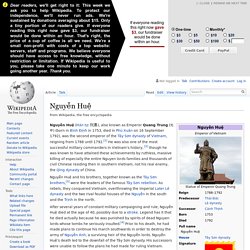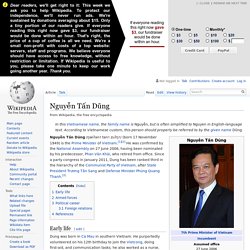

French Indochina. Indochina in 1891 (from Le Monde illustré). 1.

Panorama of Lac-Kaï. 2. Yun-nan, in the quay of Hanoi. 3. Flooded street of Hanoi. 4. Landing stage of Hanoi French Indochina (previously spelled as French Indo-China)[1] (French: Indochine française; Khmer: សហភាពឥណ្ឌូចិន; Vietnamese: Đông Dương thuộc Pháp, pronounced [ɗoŋm zɰəŋ tʰuə̀k fǎp], frequently abbreviated to Đông Pháp; Lao: ຝຣັ່ງແຫຼັມອິນດູຈີນ; Cantonese: 法屬印度支那; faat3 suk6 jan3 dou6 zi1 naa5), officially known as the Indochinese Union (Union indochinoise)[2] after 1887 and the Indochinese Federation (Fédération indochinoise) after 1947, was a grouping of French colonial territories in Southeast Asia. After the Fall of France during World War II, the colony was administered by the Vichy government and was under Japanese occupation until March 1945, when the Japanese overthrew the colonial regime.
History[edit] First French interventions[edit] European involvement in Vietnam was confined to trade during the 18th century. Ong tao. Ông Táo also known as Mandarin Tao (Táo quân, 灶君) or the Kitchen God is regarded in Vietnamese culture as the advocate of the Vietnamese family with the gods and the emissary between heaven to earth.

Description[edit] In Vietnamese culture, the Vietnamese New Year (Tết) is a time to make a new start. Children get Red envelopes with money inside, known as "lỳ-xì" in Vietnamese, as gifts for good luck in the coming. Vietnamese families prepare their houses for the coming of a prosperous new year by cleaning up and polishing their silver. It is during this cultural event that Ông táo comes in to serve as the Kitchen God for Vietnamese families.
Tradition has it that the Kitchen God is too poor to buy new clothes, and so he simply wears a long robe and shorts. Due to his presence in Vietnamese culture, Ông Táo is a prominent character in many folk plays. Vietnamese people regard Ông Táo as a family member, and various prayers and offerings are brought to him at the family altar. Bầu cua cá cọp. The game bầu cua cá cọp (bầu cua cá cọp "squash-crab-fish-tiger") is a Vietnamese gambling game using three dice.[1][2] The six sides of the die, instead of showing one to six pips, have pictures of a fish, a prawn, a crab, a rooster, a calabash gourd, and a stag.

Players place wagers on a board that has the six pictures, betting on which pictures will appear. If one die corresponds with a bet, the better receives the same amount as their bet. If two dice correspond with a bet, the better receives two times their money. If three dice correspond with a bet, the better receives three times their money. Bau cua tom ca is similar to Hoo Hey How (Fish-Prawn-Crab) in China, the dice game Crown and Anchor played by British sailors, or chuck-a-luck played in America.
Jump up ^ Robert B. Nguyễn Huệ. Nguyễn Huệ (Hán tự: 阮惠), also known as Emperor Quang Trung (光中) (born in Bình Định in 1753, died in Phú Xuân on 16 September 1792), was the second emperor of the Tây Sơn dynasty of Vietnam, reigning from 1788 until 1792.[1] He was also one of the most successful military commanders in Vietnam's history, [2] though he was known to have attained these achievements by ruthless, massive killing of especially the entire Nguyen lords families and thousands of civil Chinese residing then in southern Vietnam, not his real enemy, the Qing dynasty of China.

Nguyễn Huệ and his brothers, together known as the Tây Sơn brothers,[3] were the leaders of the famous Tây Sơn rebellion. As rebels, they conquered Vietnam, overthrowing the imperial Later Lê dynasty and the two rival feudal houses of the Nguyễn in the south and the Trịnh in the north. After several years of constant military campaigning and rule, Nguyễn Huệ died at the age of 40, possibly due to a stroke.
Hoàng Diệu – Wikipedia tiếng Việt. Hoàng Diệu (chữ Hán: 黃耀;[1] 1829 - 1882) là một quan nhà Nguyễn trong lịch sử Việt Nam, người đã quyết tử bảo vệ thành Hà Nội khi Pháp tấn công năm 1882.

Xuất thân[sửa | sửa mã nguồn] Sự nghiệp[sửa | sửa mã nguồn] Năm 1864, xảy ra vụ nổi dậy của Nguyễn Phúc Hồng Tập, con hoàng thân Miên Áo, em chú bác của Hồng Nhậm (tức vua Tự Đức), cùng với một số người khác. Bại lộ, Hồng Tập và Nguyễn Văn Viện bị án chém. Hoàng Diệu đến nhậm chức Tri huyện Hương Trà thay Tôn Thất Thanh bị đổi đi nơi khác, bấy giờ có mặt trong lúc hành quyết đã nghe Hồng Tập nói: "Vì tức giận về hòa nghị mới bị tội, xin chớ ghép vào tội phản nghịch". Nguyễn Tấn Dũng. In this Vietnamese name, the family name is Nguyễn, but is often simplified to Nguyen in English-language text.

According to Vietnamese custom, this person should properly be referred to by the given nameDũng. Early life[edit] Dung was born in Cà Mau in southern Vietnam. He purportedly volunteered on his 12th birthday to join the Vietcong, doing first-aid, and communication tasks; he also worked as a nurse, and a physician. He was wounded four times during the Vietnam War, and was later ranked as a level 2/4 wounded veteran. He attended the high-level Nguyen Ai Quoc Party School.[5] He was admitted to the Communist Party of Vietnam on 10 June 1967. Armed forces[edit] Political career[edit] Dung was admitted to the Communist Party of Vietnam on 10 June 1967.[7]